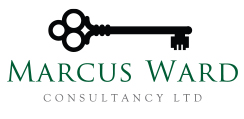VAT Reverse Charge for Goods – Acquisition Tax and Intrastat
If a business registered for VAT in the UK receives goods from other Member States in the EU (technically known as acquisitions rather than imports) it will not pay overseas VAT in the Member State from which they are purchased. However, a “Reverse Charge” applies to such purchases The rate of VAT payable is the same rate that you would have paid had the goods been supplied to the purchasing business by a UK supplier. This VAT is known as acquisition tax and a business can normally reclaim this VAT if the acquisitions relate to taxable supplies it makes. This is usually resale of the goods, but in some circumstances the goods will be “consumed” by a business. In these cases, if the business is partly exempt, there may be a restriction of the amount of acquisition tax claimable.
VAT free
In order to obtain intra-EU goods VAT free a business must give its supplier its UK VAT number. The supplier is obliged to make checks to determine whether the number is valid and if it is it allows the supplier to treat the supply as VAT free. VAT number validity may be checked here
Why?
This system ensures that tax is paid (and paid in the “correct” Member State) and also avoids “rate shopping” where a business which cannot recover input tax could, without these rules, buy goods VAT free to the detriment of suppliers in its own country. With acquisition tax, it is a level playing field for all EU businesses.
Record-keeping for acquisition tax
A business must enter the VAT details on its VAT return. The time of supply for VAT purposes is the time of acquisition – normally, the earlier of:
- the 15th day of the month following the one in which the goods come into the UK
- the date the supplier issued their invoice
A business must account for the acquisition tax on the return for the period in which the time of supply occurs, and may treat this as input tax on the same return. This, for most businesses is a bookkeeping exercise and is far preferable than the previous system when goods had to be physically entered at borders. This issue forms part of the problems for Brexit, especially with the UK’s only land border between Northern Ireland and the ROI.
Value of acquired goods for VAT purposes
The value for VAT of any goods brought into the UK is the same as the value for VAT of the goods had they been supplied to the purchaser by a UK supplier. A business must account for the value of the goods or services in £sterling, so it must convert their value into £sterling if the goods were priced in another currency.
Intrastat
Intrastat is the name given to the system for collecting statistics on the trade in goods between EU Member States. The requirements of Intrastat are similar in all EU Member States.
It is worth noting that:
- the supply of services is excluded from Intrastat
- only movements which represent physical trade in goods are covered by Intrastat, although there are some movements that are excluded
Intrastat – use of information
The information collected by the Intrastat system is a key component for Balance of Payments (BOP) and National Accounts (NA) data, which is regarded as an important economic indicator of the UK’s performance.
The Office for National Statistics uses the monthly trade in goods figures collected by HMRC together with the trade in services survey to produce the BOP and NA figures.
The Bank of England uses monthly trade data as part of its key indicators for gauging the state of the UK and world economic environment to set interest rates each month.
Government departments use the statistics to help set overall trade policy and generate initiatives on new trade areas.
Beyond the UK, trade statistics data are used by the EU to set trade policy and inform decisions made by such institutions as the European Central Bank, the United Nations and the International Monetary Fund.
The commercial world uses statistics to assess markets both within the UK (for example, to assess import opportunities) and externally (for example, to establish new markets for its goods).
Intrastat – the practicalities
All VAT registered businesses acquiring goods must complete two boxes (8 and 9) on its VAT return showing the total value of any goods acquired from VAT registered suppliers in other EU Member States (known as arrivals). In addition, larger VAT registered businesses must supply further information each month on their trade in goods with other EU Member States. This is known as an Intranet Supplementary Declaration (SD) …which is a subject for another day. For arrivals, the current threshold is £1.5 million and this limit is reviewed annually.
How this system will work (if at all) after Brexit remains to be seen, but given past experiences I am not optimistic.
